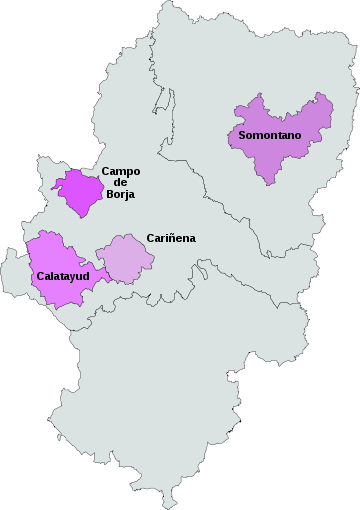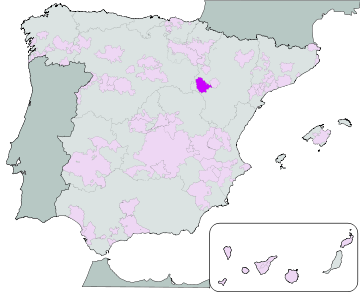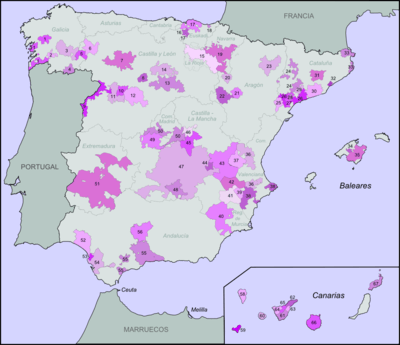Calatayud (DO)

Calatayud is a Spanish Denominación de Origen (DO) for wines located in the southwestern corner of the province of Zaragoza (Aragón, Spain) about 90 km from Zaragoza and covers over 5,600 ha, extending over 46 different municipalities, including Calatayud itself. It borders with the Cariñena (DO) in the east and with the province of Soria in the west. It is in the valley of the River Ebro and is crisscrossed by many other rivers including the Jalón, Jiloca, Manubles, Mesa (river), Piedra and Ribota. The vineyards are to be found on the south facing slopes of the Sierra de la Virgen range at heights of between 550 m and 800 m above sea level. Calatayud achieved DO status in 1990 and it became Aragon’s second largest quality wine-producing region after Cariñena.[1]
Climate
The climate is continental (hot dry summers and cold winters), the mean annual temperature does not exceed 13 °C, and there is a good probability of frost during six months of the year. The mean annual rainfall is between 300 mm and 500 mm per annum.
Soils
Most of the vines are planted in soils that are stoney, loose, very poor in nutrients and with a high lime content. The permeability is good so the roots are able to obtain the water and nutrients they require.
Grape Varieties
Red varieties are predominant in Calatayud DO and account for about 83% of the vines planted. 11 different varieties (7 red and 4 white) are authorized by the regulations of the DO, but by far the most significant one is Garnacha tinta, a red grape, representing over 55% of the vines planted. The other red varieties are: Mazuelo, Tempranillo, Monastrell, Cabernet Sauvignon, Merlot and Syrah. The authorized white varieties are: Macabeo, Malvasía, Garnacha blanca and Chardonnay.


